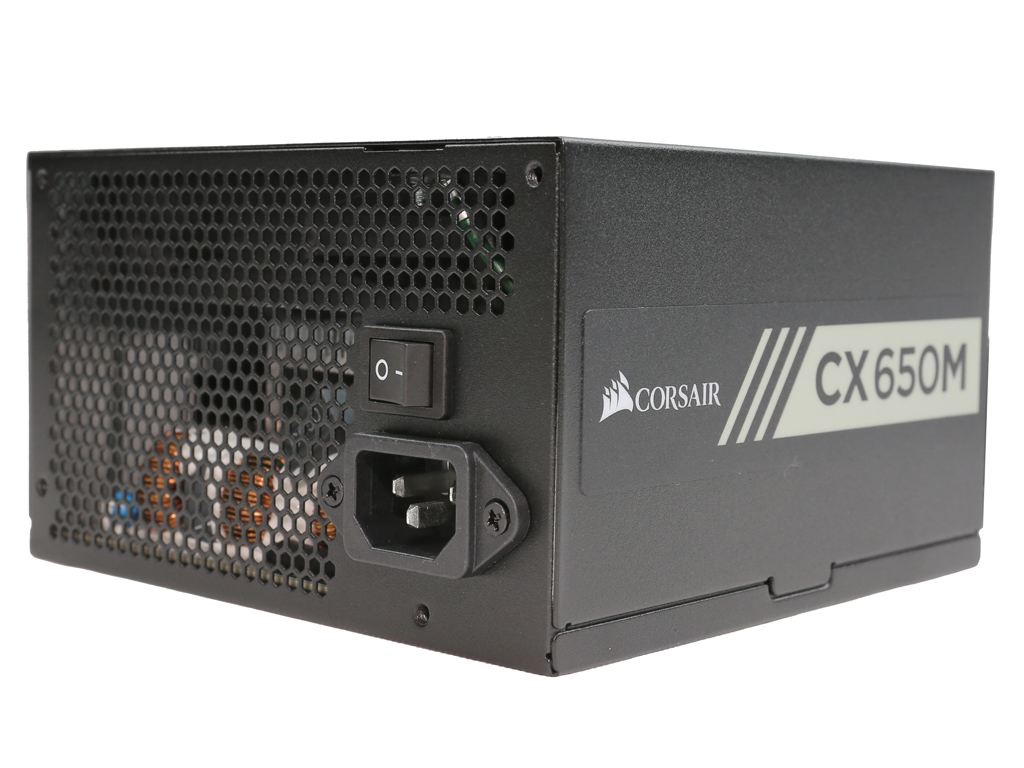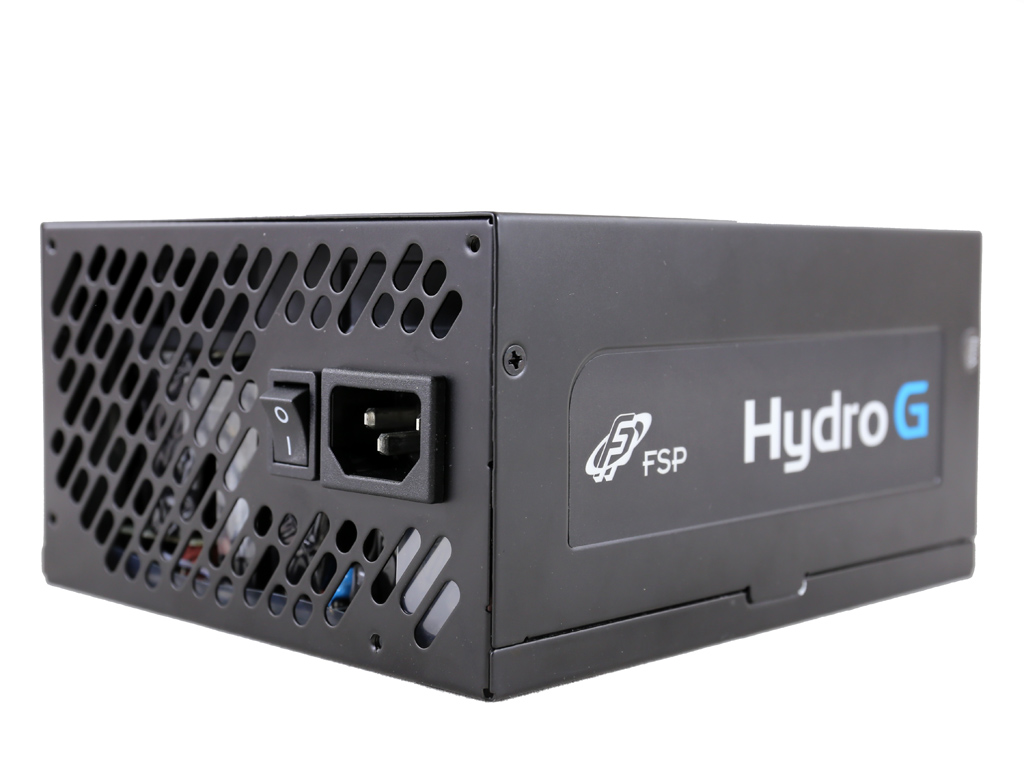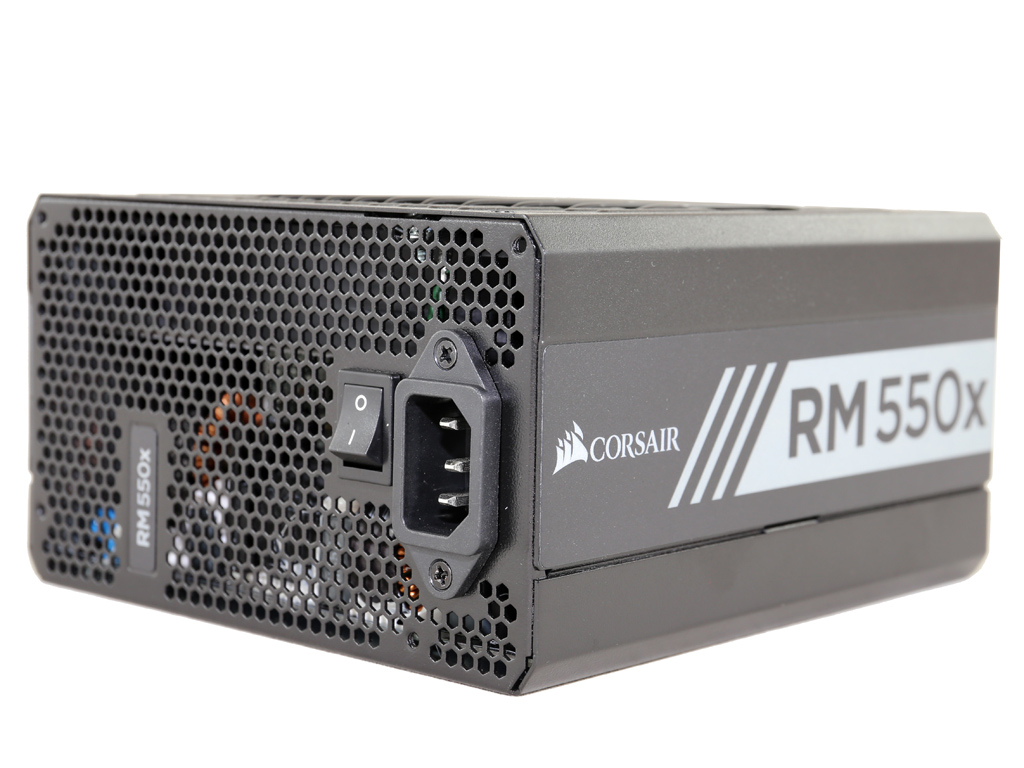Micronics Caslon II 600W PSU Review: A Low-Cost Gem?
Why you can trust Tom's Hardware
Load Regulation, Hold-Up Time & Inrush Current
To learn more about our PSU tests and methodology, please check out How We Test Power Supply Units.
Primary Rails And 5VSB Load Regulation
Load Regulation testing is detailed here.
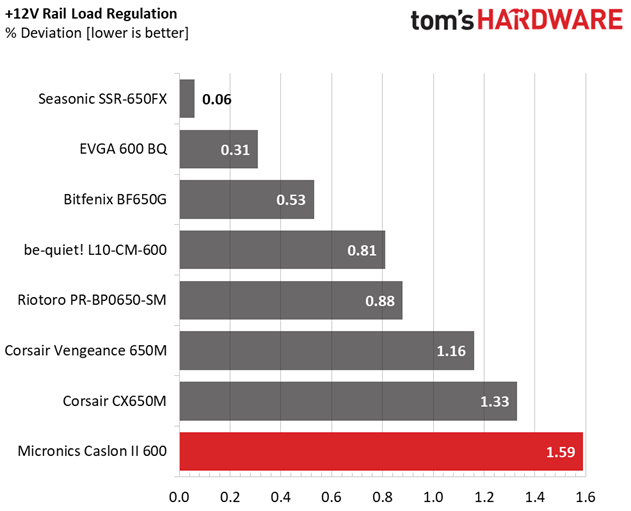
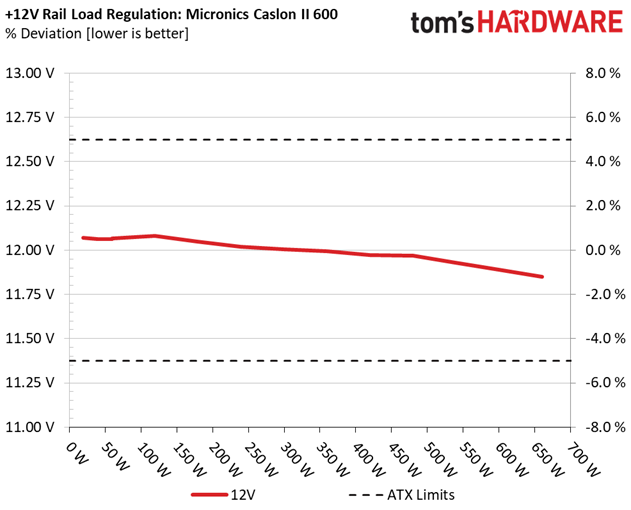
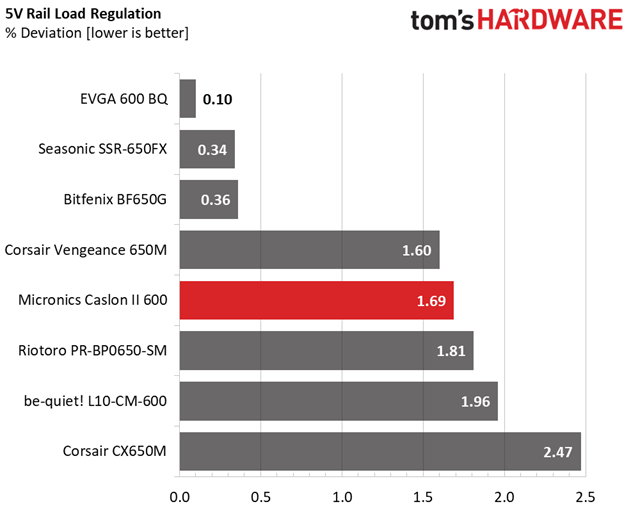
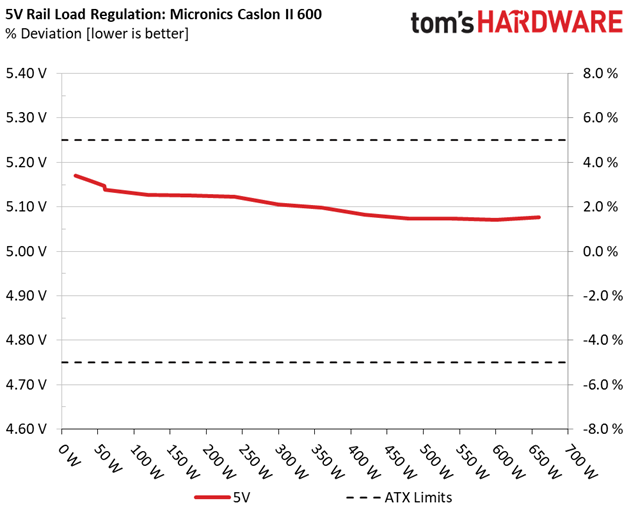
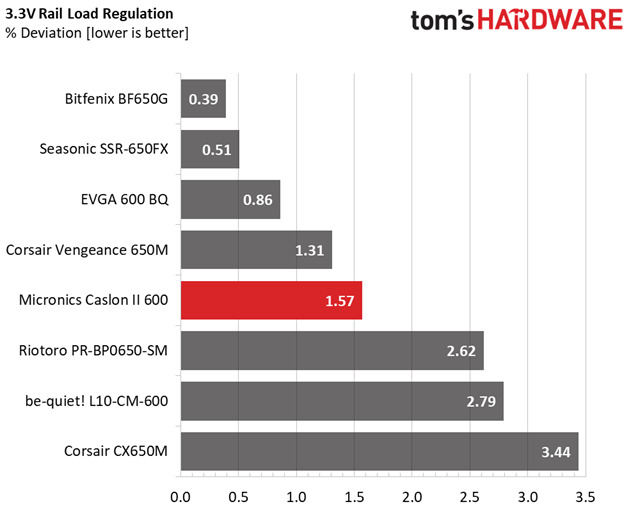
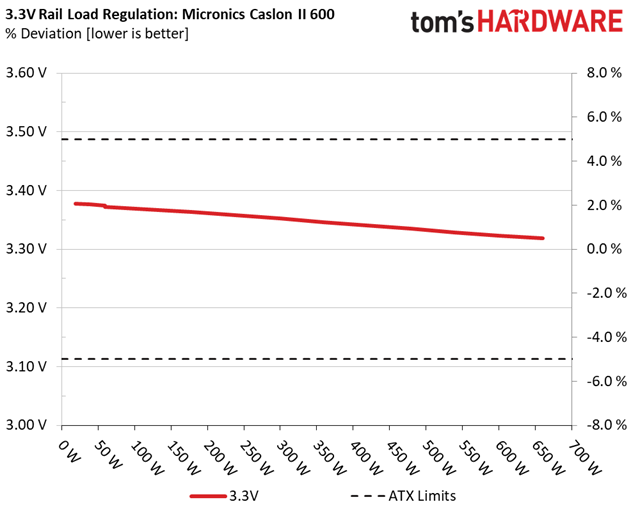
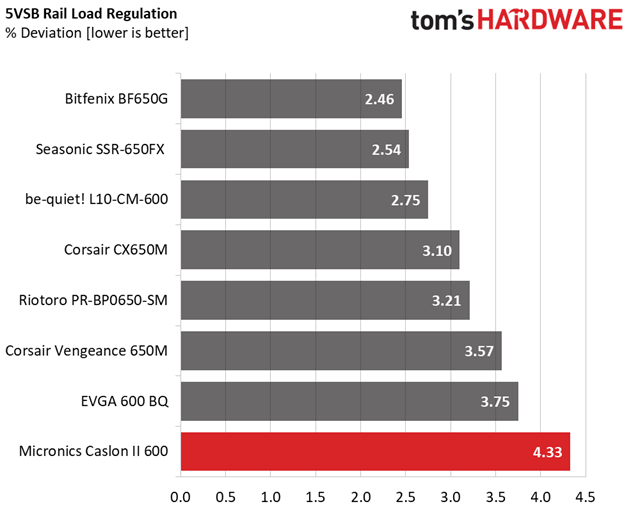
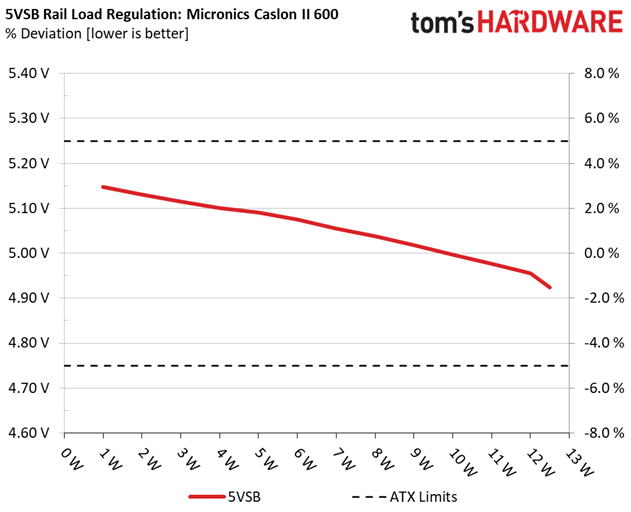
Hold-Up Time
Our hold-up time tests are described in detail here.
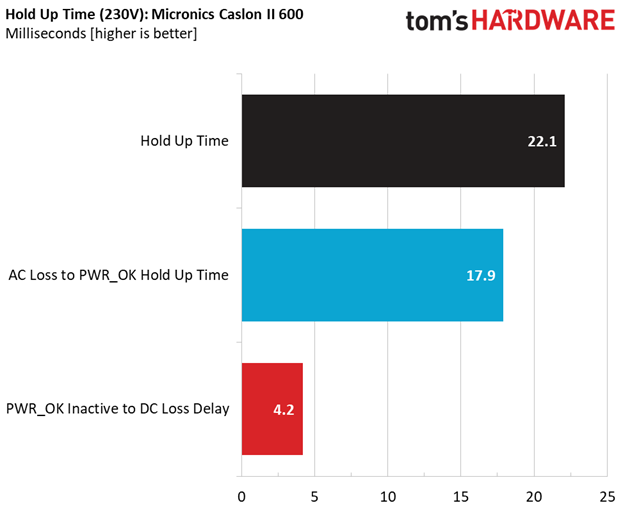
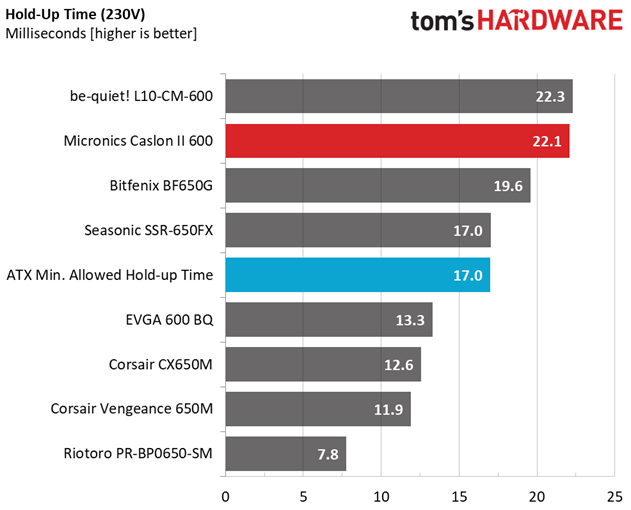
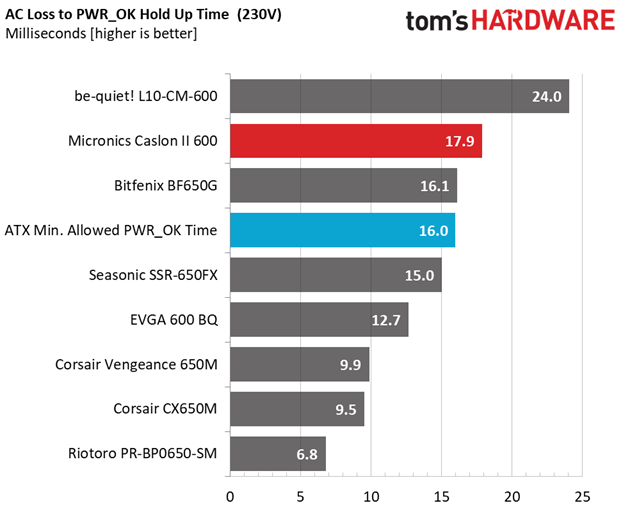
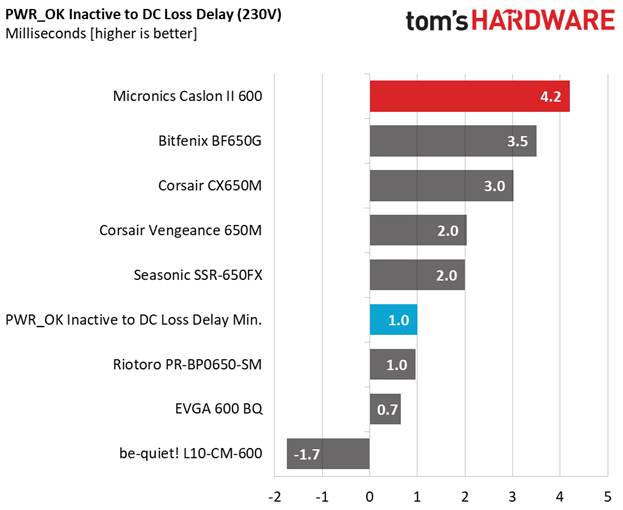
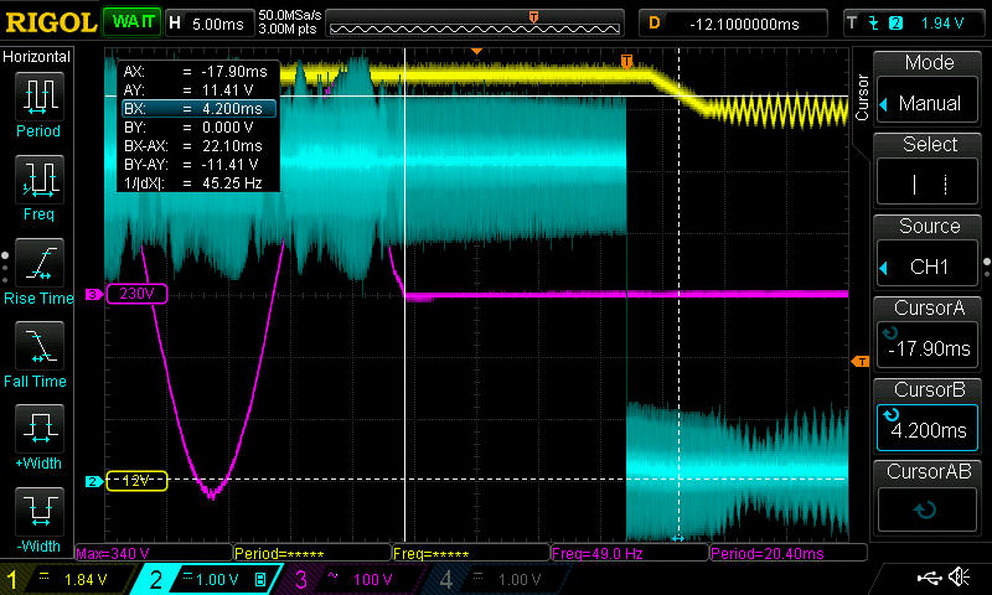

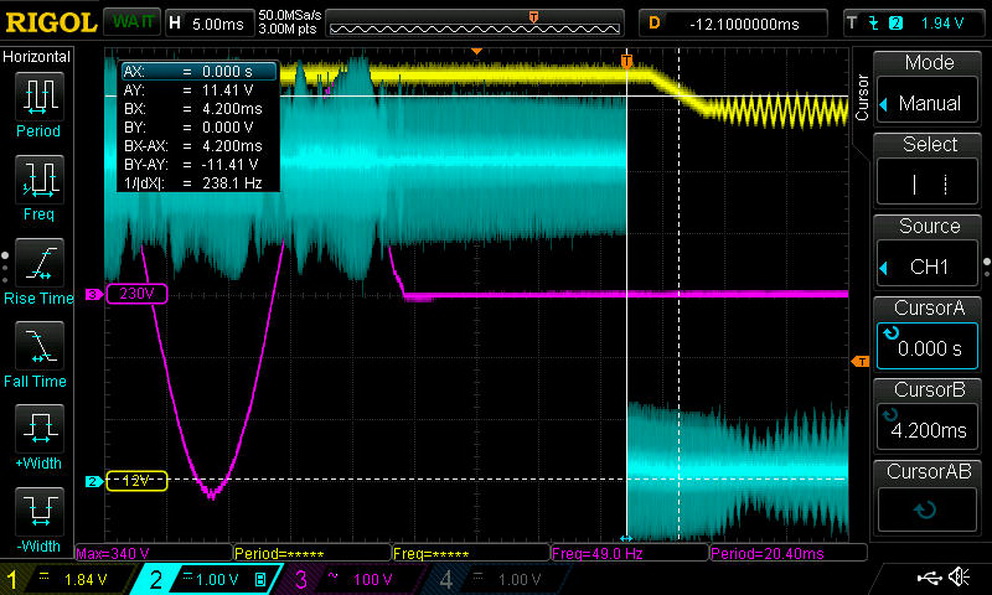
The hold-up time we measure is long, and the power-good signal is accurate. We do find a problem during those tests though: the power-good signal's ripple is too high, and we also notice some oscillations on the +12V rail.
Inrush Current
For details on our inrush current testing, please click here.
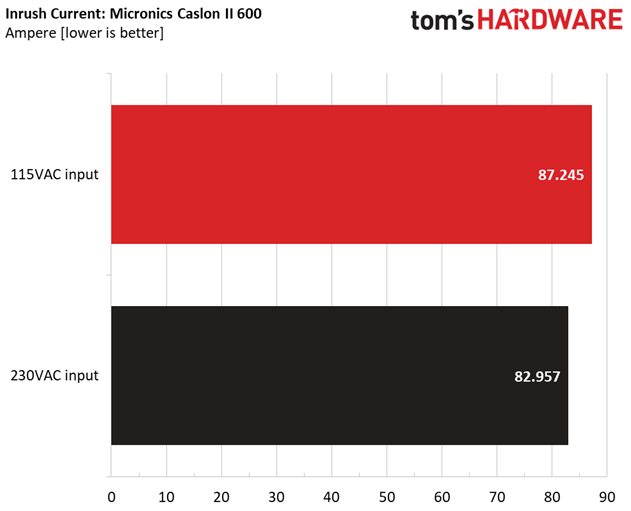
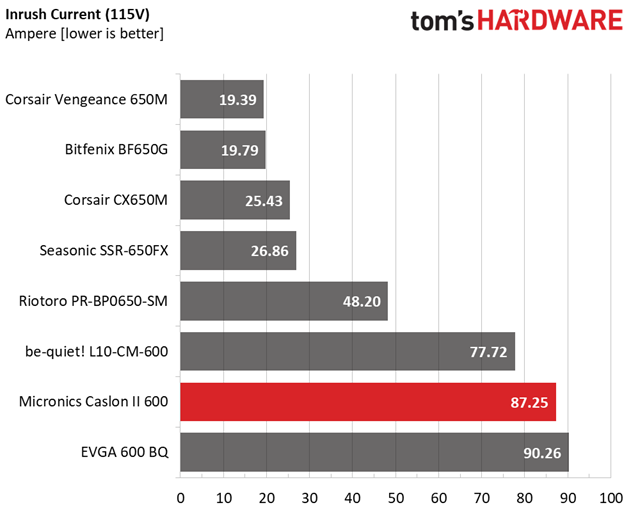
The inrush current is crazy-high with both voltage inputs.
Load Regulation And Efficiency Measurements
The first set of tests reveals the stability of the voltage rails and the Caslon II’s efficiency. The applied load equals (approximately) 10 to 110 percent of the PSU's maximum load in increments of 10 percentage points.
Get Tom's Hardware's best news and in-depth reviews, straight to your inbox.
We conducted two additional tests. During the first, we stressed the two minor rails (5V and 3.3V) with a high load, while the load at +12V was only 0.1A. This test reveals whether a PSU is compatible with Intel's C6/C7 sleep states or not. In the second test, we determined the maximum load the +12V rail could handle with minimal load on the minor rails.
| Test # | 12V | 5V | 3.3V | 5VSB | DC/AC (Watts) | Efficiency | Fan Speed | PSU Noise | Temps (In/Out) | PF/AC Volts |
|---|---|---|---|---|---|---|---|---|---|---|
| 1 | 3.168A | 1.947A | 1.956A | 0.982A | 59.856 | 79.956% | 1014 RPM | 29.0 dB(A) | 38.18°C | 0.974 |
| 12.080V | 5.131V | 3.373V | 5.090V | 74.861 | 43.86°C | 115.18V | ||||
| 2 | 7.342A | 2.925A | 2.939A | 1.182A | 119.586 | 84.749% | 1097 RPM | 30.8 dB(A) | 38.77°C | 0.970 |
| 12.080V | 5.127V | 3.368V | 5.075V | 141.106 | 44.75°C | 115.20V | ||||
| 3 | 11.911A | 3.414A | 3.418A | 1.385A | 179.512 | 86.140% | 1191 RPM | 32.8 dB(A) | 39.27°C | 0.985 |
| 12.049V | 5.126V | 3.363V | 5.055V | 208.395 | 45.63°C | 115.11V | ||||
| 4 | 16.500A | 3.903A | 3.929A | 1.589A | 239.524 | 86.532% | 1277 RPM | 34.6 dB(A) | 39.81°C | 0.992 |
| 12.020V | 5.123V | 3.358V | 5.038V | 276.804 | 46.59°C | 115.03V | ||||
| 5 | 20.756A | 4.894A | 4.920A | 1.794A | 299.638 | 86.360% | 1303 RPM | 34.9 dB(A) | 40.12°C | 0.995 |
| 12.004V | 5.106V | 3.352V | 5.018V | 346.962 | 47.22°C | 115.04V | ||||
| 6 | 25.012A | 5.884A | 5.916A | 2.002A | 359.764 | 85.891% | 1440 RPM | 37.1 dB(A) | 41.32°C | 0.996 |
| 11.993V | 5.098V | 3.346V | 4.997V | 418.860 | 49.08°C | 114.95V | ||||
| 7 | 29.262A | 6.885A | 6.913A | 2.211A | 419.480 | 85.225% | 1498 RPM | 38.3 dB(A) | 41.88°C | 0.997 |
| 11.974V | 5.083V | 3.341V | 4.977V | 492.203 | 50.21°C | 114.86V | ||||
| 8 | 33.559A | 7.885A | 7.916A | 2.422A | 480.036 | 84.370% | 1565 RPM | 38.8 dB(A) | 42.10°C | 0.997 |
| 11.968V | 5.073V | 3.335V | 4.955V | 568.962 | 51.86°C | 114.76V | ||||
| 9 | 38.300A | 8.378A | 8.411A | 2.429A | 539.358 | 83.288% | 1630 RPM | 39.7 dB(A) | 44.17°C | 0.997 |
| 11.928V | 5.074V | 3.329V | 4.942V | 647.581 | 54.90°C | 114.75V | ||||
| 10 | 43.142A | 8.876A | 8.937A | 2.539A | 600.082 | 82.220% | 1620 RPM | 39.6 dB(A) | 45.90°C | 0.997 |
| 11.888V | 5.071V | 3.323V | 4.924V | 729.847 | 56.93°C | 114.65V | ||||
| 11 | 48.352A | 8.865A | 8.947A | 2.542A | 660.081 | 81.123% | 1615 RPM | 39.5 dB(A) | 46.79°C | 0.997 |
| 11.848V | 5.077V | 3.319V | 4.919V | 813.676 | 58.24°C | 114.55V | ||||
| CL1 | 0.136A | 14.004A | 13.999A | 0.000A | 113.853 | 75.836% | 1580 RPM | 39.0 dB(A) | 43.47°C | 0.977 |
| 12.888V | 4.650V | 3.356V | 5.137V | 150.130 | 52.67°C | 115.18V | ||||
| CL2 | 44.997A | 1.002A | 1.000A | 1.000A | 537.095 | 83.643% | 1590 RPM | 39.1 dB(A) | 45.83°C | 0.997 |
| 11.633V | 5.255V | 3.336V | 5.043V | 642.129 | 56.69°C | 114.76V |
Load regulation on the +12V rail is mediocre. Moreover, the Caslon II 600W's performance in our cross-load tests is bad, as expected, due to the secondary side's group regulation scheme.
Although the efficiency levels we measure are low, they satisfy the 80 PLUS Bronze requirements even under high operating temperatures. The fan profile does get aggressive, though. There is a slight reduction in fan speed during our full load and overload tests simply because that circuit is driven by the +12V rail, which drops notably during those tests.
The low-speed fan doesn't go above 40 dB(A). But even during our first test its noise output is close to 30 dB(A), so we can't exactly call it quiet, either.
MORE: Best Power Supplies
MORE: How We Test Power Supplies
MORE: All Power Supply Content
Current page: Load Regulation, Hold-Up Time & Inrush Current
Prev Page Teardown & Component Analysis Next Page Efficiency, Temperature & Noise
Aris Mpitziopoulos is a contributing editor at Tom's Hardware, covering PSUs.
-
nobspls Why would anyone choose this one say over the Corsair CX650M? Which you can get typically for $50.Reply -
spentshells " Not only does this minimize your carbon footprint"Reply
The idea of conserving electricity is a fallacy, if you use less the people selling can sell more to someone else..... they aren't just holding on to the energy you saved because you're a hero saving the world.
Making your footprint smaller doesn't matter in the least when someone else's foot print just gets that much bigger.
Save some money, sure but for how long? The less you use the more they can charge for that smaller amount later on..... that's how it is.
On a different note, Ill likely try the psu out at one point on a build for someone else. -
rohs42 > The idea of conserving electricity is a fallacyReply
No it isn't. Of course a 100 megawatt generator will not be turned off if someone saves 10 watts of power. But if a 10 million people save 10 watts of power, then of course it will be turned off. And if 100 million people save 10 watts, then there'll be no business case for that new gigawatt power plant.
As citizens, consumers and voters we all bear a small share of responsibility for the state of the world, and we all have a small part to play in making it better. It's only through working together that humanity improves. Your appeal to helplessness and apathy is pathetic. -
jabliese Hey Tom's,Reply
Once upon a time, we had an extensive brown out at work, which went on for 3 days. On day 2, I was surprised to find many of the PC's that were still working were on 60v power. Over the years, it did not seem to have a adverse affect on any of the power supplies. Lately, I have been wondering what their efficiency numbers looked like during that time, any chance you could add a severe undervolt test to the power supply suite? -
Aris_Mp 60V is too low. Most PSUs won't even work at such low voltage. I am surprised to hear that the PSUs at your work were working under such conditions for days.Reply
Efficiency drops along with voltage input. I want to add more protection tests, however I already have enough fails with the current ones. Nonetheless, I am keeping every suggestion under consideration.
